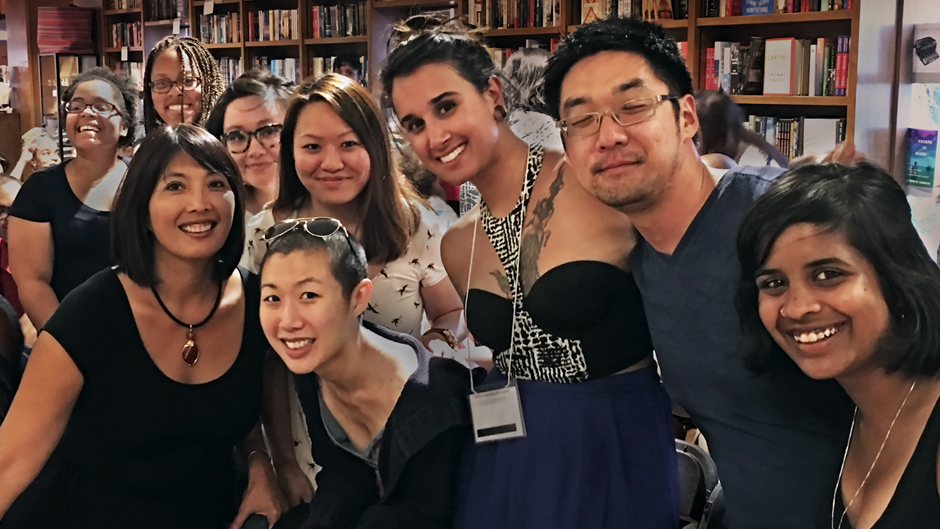Through all the joy, fanfare, and soul-stirring power of a VONA (Voices of Our Nation Arts Foundation) literary reading, there remains a palpable pain body—one festered through experiences of exclusion as writers of color.
“In the seven layers of your skin are seven centuries of damage that brought you here,” reads author Minal Hajratwala, describing her “wound theory” to a packed theater in Miami’s Little Haiti in June during a VONA/Voices faculty reading. “What’s exhausting is to always cover up the wound.”
Faculty readings were among several free events open to the public during the two weeks that UM hosted VONA/Voices, the only multi-genre conference in the country for writers of color. M. Evelina Galang, director of the UM Creative Writing program and a long-time VONA/Voices faculty and board member, helped move the annual conference to UM from California last year.
“This year, we had a record number of applicants, so Miami, Miami, Miami!” says Diem Jones, who cofounded VONA/Voices in 1999 with fellow authors Elmaz Abinader, Junot Diaz, and Victor Diaz.
Of this year’s 520 applicants from around the world, 150 were selected for workshops in fiction, poetry, memoir, LGBTQ narrative, young adult, and more. All VONA/Voices faculty are “high profile writers committed to social justice, excellent teachers, and who mirror the population we’re trying to reach,” Abinader explains. Among this year’s 14 faculty members was poet John Murillo, a VONA/Voices student in 2003 and visiting assistant professor in the UM Creative Writing program from 2011 to 2012.
In addition to strong writing, VONA/Voices seeks students who think deeply about what it means to be a writer of color as well as those with limited options for craft development. The greatest impact of the conference, Abinader says, is having “a place to feel safe, where no one is judging them based on the stories they access.”
“It’s supportive and nurturing, it builds trust, and it digs deep into their soul,” says Jones, noting that each workshop typically goes through a full box of tissues in a week. “We tell them, ‘Don’t come if your wall is up.’ ”

